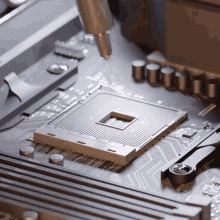
The Thermal Trinity (Paste, Plastic, and Peel)
Share
When it comes to thermal management in various industries, understanding the thermal trinity of paste, plastic, and peel is crucial. These three components play a significant role in ensuring optimal heat dissipation and maintaining the efficiency of electronic devices.
What is Thermal Paste?
Thermal paste, also known as thermal grease or thermal compound, is a heat conductive material used to improve the heat transfer between the heat source (such as a CPU or GPU) and the heat sink. It fills in the microscopic gaps and imperfections between the two surfaces, allowing for better thermal conductivity and heat dissipation.
Why is Thermal Plastic Important?
Thermal plastic, often in the form of thermal pads or films, is another essential component in thermal management. These materials provide a gap filler between components and heat sinks, ensuring a tight bond and efficient heat transfer. Thermal plastics are known for their flexibility and ease of use, making them ideal for various applications.
Understanding Thermal Peel
Thermal peel, also referred to as thermal interface material (TIM) removal, is the process of safely removing old thermal paste or pads from components. Properly cleaning and reapplying thermal interface materials is crucial for maintaining the thermal performance of electronic devices over time.
By mastering the thermal trinity of paste, plastic, and peel, industries can enhance the performance and longevity of their electronic devices. Whether it's optimizing the cooling system of a computer or ensuring the efficiency of a power electronics module, these thermal management components play a vital role in maintaining the temperature and reliability of electronic systems.
